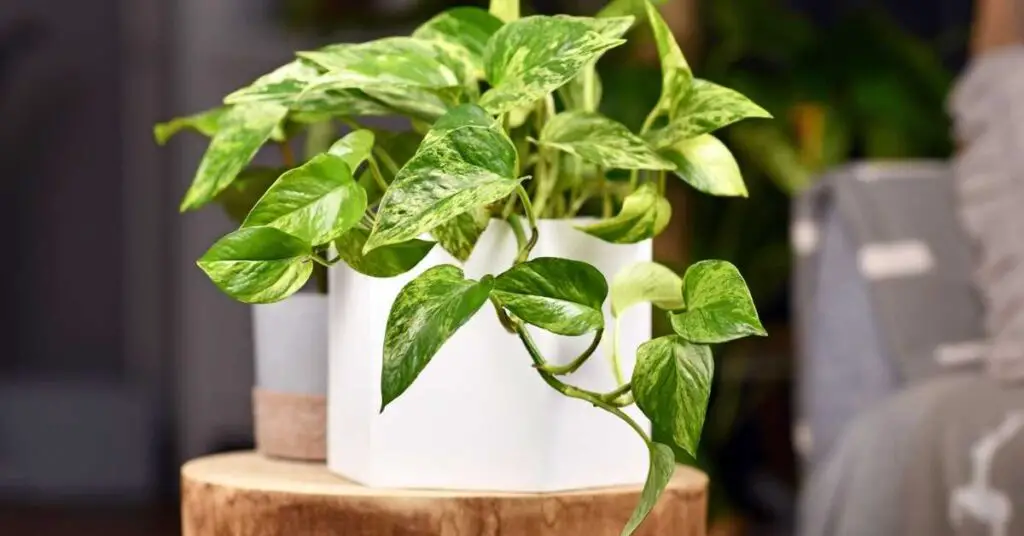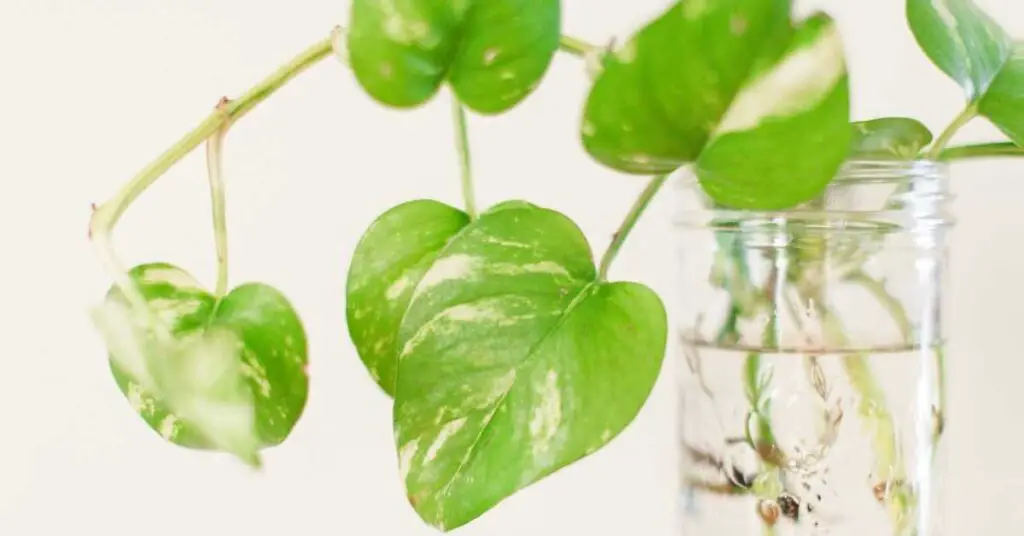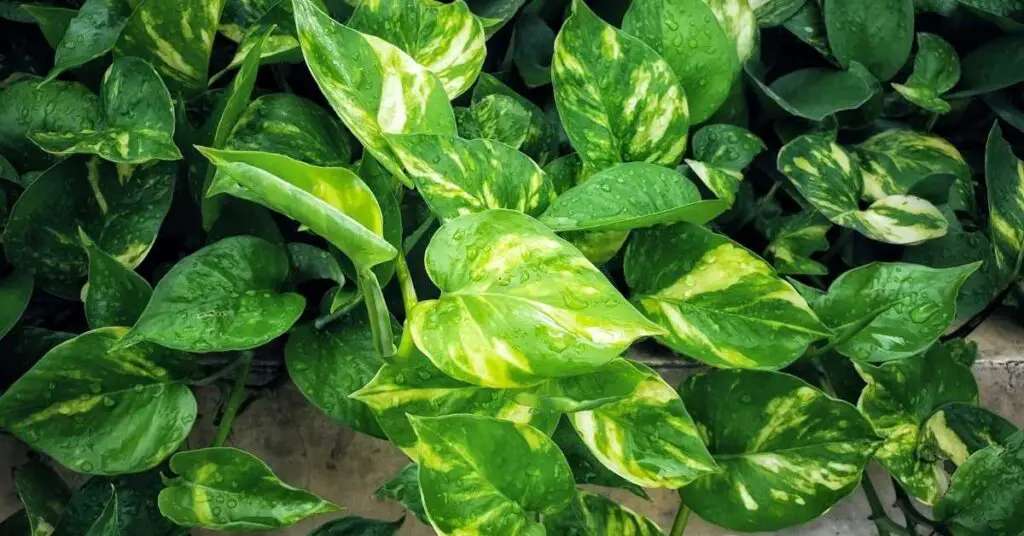We’re an affiliate. We may earn a commission on qualifying purchases through the links on this page. Learn more by reading our disclaimer.
Will Pothos regrow after cutting or pruning? Yes, Pothos plants are known for their ability to regrow after being cut. When properly pruned, Pothos plants will grow new leaves and vines from the nodes, which are the points where leaves attach to the stem. With proper care, Pothos can continue to grow and thrive for years, making them a popular choice for indoor gardening enthusiasts.
Pothos are a popular houseplant due to their ease of care and beautiful foliage. They are also known for their ability to thrive in low light conditions and purify the air in your home. Pothos are incredibly easy to prune and you can take the cuttings to make new plants. But, will pothos regrow after cutting the plant back?
In this article, I will discuss the various methods of propagating Pothos plants, how to care for them, and answer some common questions about Pothos propagation.
How Does Pothos Grow?
Pothos is a fast-growing vine that can reach up to 10 feet in length. They are known for their vining tendencies, which means they will grow long tendrils that will climb and wrap around anything they can find. Pothos plants are easy to care for and can be propagated by stem cuttings. When pruning your Pothos plant, make sure to cut the stems back to just above a node. Nodes are the points on the stem where leaves grow out.
Pruning your Pothos plant can help encourage new growth and keep it looking full and healthy. By cutting back the stems, you can control the size and shape of your Pothos. Pruning also helps remove any dead or damaged leaves, which can prevent the spread of disease.

Propagation of Pothos
Propagation is the process of growing new plants from existing ones. Pothos plants can be propagated by stem cuttings, which is the easiest and most common method. There are two methods of propagating Pothos: water propagation and soil propagation.
Water Propagation
Water propagation is a simple and effective method of propagating Pothos plants. To propagate your Pothos using water, follow these steps:
- Cut a stem from your Pothos plant just above a node.
- Remove any leaves from the lower portion of the stem.
- Place the stem in a glass or jar filled with water, making sure the cut end is submerged.
- Place the glass or jar in a bright, indirect light.
- Change the water every few days to keep it fresh.
You can use a cup, a jar of some sort or you can get a plant propagation station like I have. It has three different jars where you can put cuttings if you are serious about growing new plants. After a few weeks, you should start to see roots growing from the cut end of the stem. Once the roots are a few inches long, you can transfer the cutting to a pot with soil.

Soil Propagation
Soil propagation is another effective method of propagating Pothos plants. To propagate your Pothos using soil, follow these steps:
- Cut a stem from your Pothos plant just above a node.
- Remove any leaves from the lower portion of the stem.
- Dip the cut end of the stem in rooting hormone.
- Plant the stem in a pot filled with moist soil, making sure the cut end is buried.
- Water the soil and place the pot in a bright, indirect light.
After a few weeks, you should start to see roots growing from the stem. Once the roots are a few inches long, you can transplant the cutting to a larger pot.
Can Pothos be Cut Back?
Yes, Pothos can be cut back to encourage new growth and keep the plant looking full and healthy. When cutting back your Pothos plant, make sure to cut the stems back to just above a node. Nodes are the points on the stem where leaves grow out. By cutting back the stems, you can control the size and shape of your Pothos.
Will Pothos Regrow After Cutting?
Yes, Pothos will regrow after cutting as long as the stem is cut just above a node. Nodes are the points on the stem where leaves grow out. By cutting the stem just above a node when pruning, you are allowing the plant to produce new growth from that node. It’s important to note that Pothos plants grow slower in the winter months, so be patient if you don’t see new growth immediately.
Factors that can affect Pothos regrowth include lighting, temperature, and humidity. Pothos plants prefer bright, indirect light, and temperatures between 65 and 75 degrees Fahrenheit. They also like high humidity, so consider using a humidifier or placing a tray of water near your plant to increase the humidity in the air.
To encourage Pothos regrowth, make sure your plant is getting enough light, water, and nutrients. You can also use a fertilizer specifically formulated for houseplants to give your Pothos the nutrients it needs to grow.

How Long Does It Take for A Pothos to Regrow After Cutting?
After cutting back a Pothos plant, it can take several weeks or even a few months for the plant to regrow. Pothos plants can be slow growers when trying to regrow, especially during the winter months when light and temperature conditions may not be ideal.
Factors that can affect how long it takes for a Pothos plant to regrow after cutting include the size of the cutting, the health of the plant, and the conditions in which it is growing. If the plant is not receiving enough light, water, or nutrients, it may also take longer for new growth to appear.
However, with proper care and maintenance, a Pothos plant should start to regrow within a few weeks to a few months after being cut back. If you are concerned about the health of your Pothos plant or the rate at which it is regrowing, consider adjusting the lighting, watering, and fertilization of the plant. This can help encourage new growth and keep your Pothos plant healthy and thriving.
Tips for Maintaining Pothos
Pothos plants are easy to care for and require minimal maintenance. Here are some tips for maintaining your Pothos plant:
Lighting Requirements
Pothos plants prefer bright, indirect light. Direct sunlight can burn the leaves, so it’s best to place your plant in a spot that receives bright, indirect light. Pothos can also be put outside in a location that gets bright indirect light. I like to put my pothos plants on our front porch in dapple sun. They love it!
Watering Requirements
Pothos plants like to be kept moist but not waterlogged. Water your Pothos plant when the top inch of soil feels dry to the touch. Make sure to drain any excess water from the saucer to prevent root rot.
Soil Requirements
Pothos plants prefer well-draining soil. You can use a commercial potting mix or make your own by combining equal parts potting soil, perlite, and peat moss.
FAQs
Here are some frequently asked questions about Pothos propagation:
Where do you cut Pothos to regrow?
When pruning your Pothos plant, make sure to cut the stems back to just above a node. Nodes are the points on the stem where leaves grow out. By cutting back the stems just above a node, you are allowing the plant to produce new growth from that node.
How do you regrow Pothos from cuttings?
Pothos plants can be propagated by stem cuttings. To propagate your Pothos using water, cut a stem just above a node and place it in a glass or jar filled with water. To propagate your Pothos using soil, cut a stem just above a node and plant it in a pot filled with moist soil.
Why is my Pothos not growing after cutting?
Pothos plants grow slower in the winter months, so be patient if you don’t see new growth immediately. Factors that can affect Pothos regrowth include lighting, temperature, and humidity. Make sure your plant is getting enough light, water, and nutrients, and consider using a humidifier or placing a tray of water near your plant to increase the humidity in the air.
Can I put Pothos cutting directly into soil?
Yes, you can put Pothos cutting directly into soil. To do this, cut a stem just above a node and plant it in a pot filled with moist soil. The only thing about putting the cutting directly into potting soil is that you won’t be able to see the progress of the new roots growing. I like to see the new roots as they emerge so that I can plant it when the roots are just starting to grow.
I have made the mistake of letting pothos cuttings that I had rooting in water for too long and the roots got out of hand. This can make it hard (not impossible) to plant the cuttings.
Do Pothos cuttings grow faster in water or soil?
Pothos cuttings can grow faster in water because they have direct access to water.s. However, once the roots are a few inches long, it’s best to transfer the cutting to a pot with soil to encourage further growth.
How fast do Pothos cuttings grow in water?
Pothos cuttings can start to develop roots within a few weeks of being placed in water. Once the roots are a few inches long, it’s best to transfer the cutting to a pot with soil to encourage further growth.

Conclusion
Pothos plants are a great addition to any home or office. They are easy to care for and can be propagated using simple methods. By following the tips and methods outlined in this guide, you can successfully propagate your own Pothos plants and enjoy their beautiful foliage for years to come.
Remember to cut back your Pothos plant to encourage new growth and keep it looking full and healthy. When pruning, make sure to cut the stems back to just above a node, which will allow the plant to produce new growth from that node.
Water propagation and soil propagation are both effective methods of propagating Pothos plants. Make sure your plant is getting enough light, water, and nutrients, and consider using a humidifier or placing a tray of water near your plant to increase the humidity in the air.
Thank you for reading this guide on how to propagate Pothos plants. If you have any questions or comments, please feel free to leave them below. Happy gardening!

